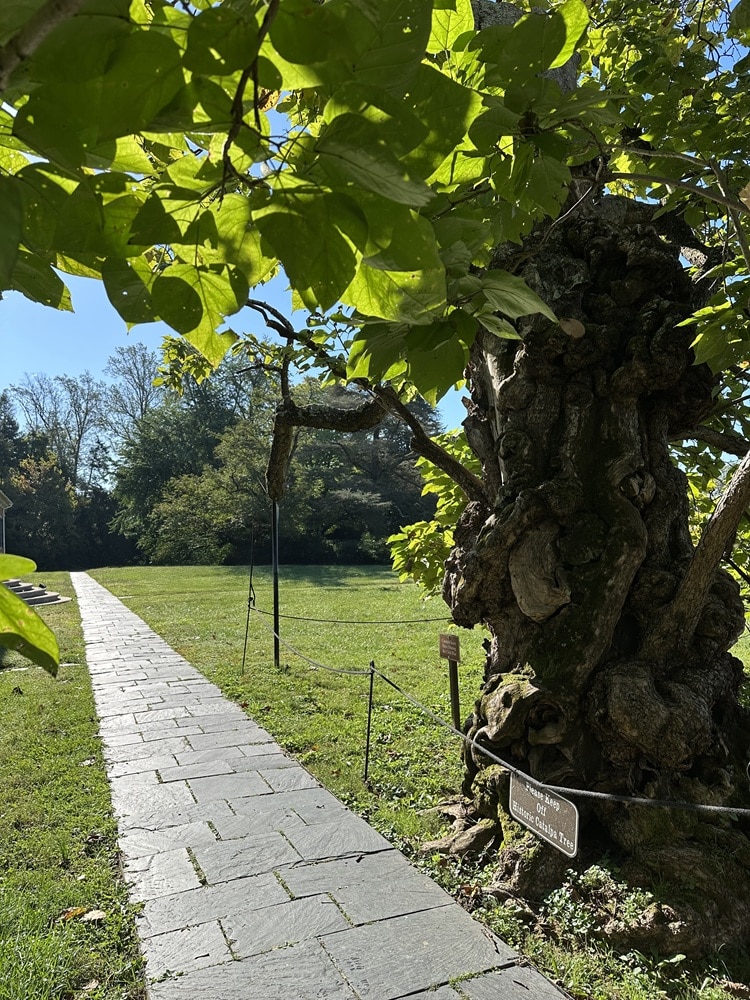Framing History: Chatham’s Beauty and Bloodshed
ECW welcomes back guest author and photographer Melissa A. Winn.
In early October, I visited Chatham, on the Fredericksburg & Spotsylvania National Military Park, with the Center for Civil War Photography’s Image of War seminar. The early morning visit included a rising sun flickering through the trees, casting evocative shadows on the historic home. It was hard to reconcile the majestic scene with the horrors the place played host and witness to during the Civil War. It’s like that with so many of the preserved battlefields and sites: They hold both grace and grief.

The house, left unattended by its owners for much of the war, was used as a military headquarters and a hospital. Some of the first casualties of the December 1862 battle of Fredericksburg were brought to Chatham. The house was crowded with doctors, nurses, and wounded soldiers who filled the rooms and spilled out onto the porches and the grounds outside. More than 130 soldiers treated here who did not survive were temporarily buried in the yard.

As a writer and an English major, I always associate this site with one of its most famous hospital volunteers, the poet Walt Whitman. I’ve always been enamored of his work. After the battle of Fredericksburg, the 43-year-old poet went in search of his brother, Lt. George Whitman of the 51st New York, who was listed among those wounded in the battle. Whitman found himself at Chatham. While he failed to find his brother here, whom he eventually discovered had suffered only a slight facial wound, Whitman was deeply affected by the horrors of war he witnessed. He began to make regular visits to Chatham to help dress wounds, read to injured soldiers, and help them write letters home.
“The house is quite crowded, everything impromptu, no system, all bad enough, but I have no doubt the best that can be done; all the wounds pretty bad, some frightful, the men in their old clothes, unclean and bloody,” Whitman wrote about his experience at Chatham Manor.[1]

In his poem, “The Wound Dresser,” Whitman also immortalized the site’s catalpa tree, a witness to the war that still stands today (albeit with a lot of manmade assistance).
“Outdoors, at the foot of a tree, within ten yards of the front of the house, I noticed a heap of amputated feet, legs, arms, hands, etc. — about a load for a one-horse cart. Several dead bodies lie near, each covered with its brown woolen blanket. In the dooryard, toward the river, are fresh graves, mostly of officers, their names on pieces of barrel staves or broken board, stuck in the dirt.”
It’s a grim image, a striking contrast to the grounds’ stunning gardens and the home’s historic charm today – grace and grief.
Melissa A. Winn is the Director of Marketing and Communications for the National Museum of Civil War Medicine. Previously, she was the Marketing Manager for the American Battlefield Trust and Director of Photography for HistoryNet, publisher of nine history-related magazines, including America’s Civil War, American History, and Civil War Times. She’s a Senior Editor for Military Images magazine; Editor of Shavings, the member newsletter of the Early American Industries Association, is a member of the Board of Directors of the Civil War Roundtable Congress; and President of the Bull Run Civil War Round Table.
Endnotes:
[1] “Our Wounded and Sick Soldiers” New York Times, December 11, 1864.
Thanks for the wonderful photos and narrative!